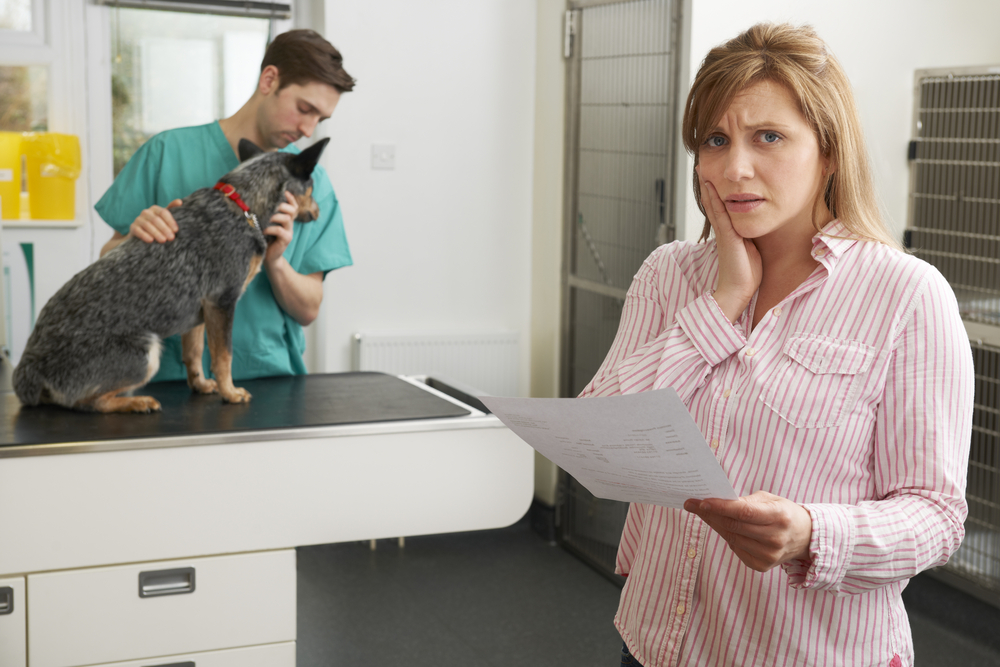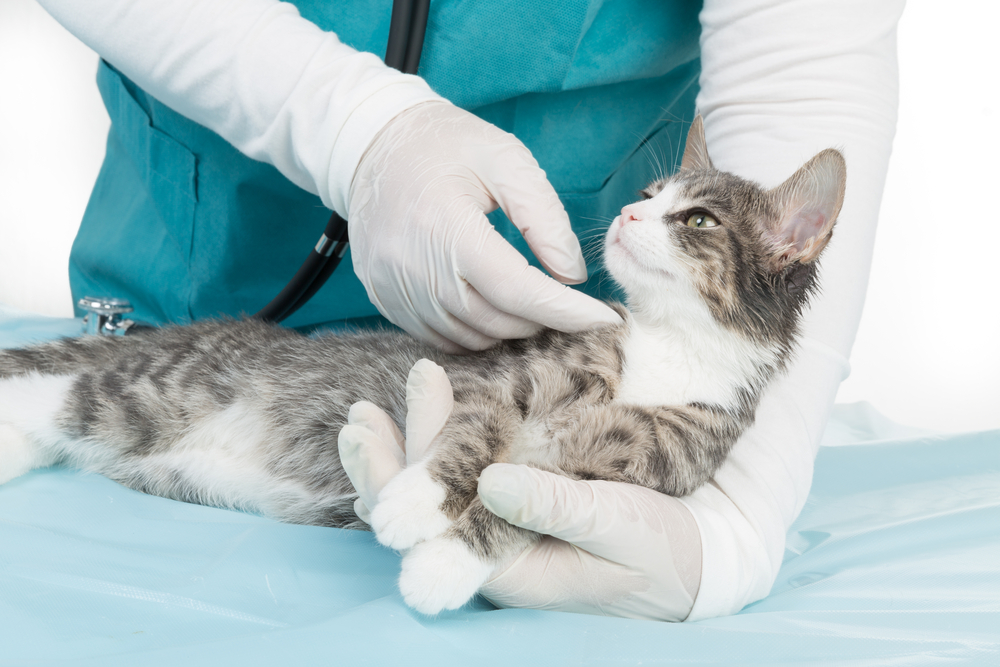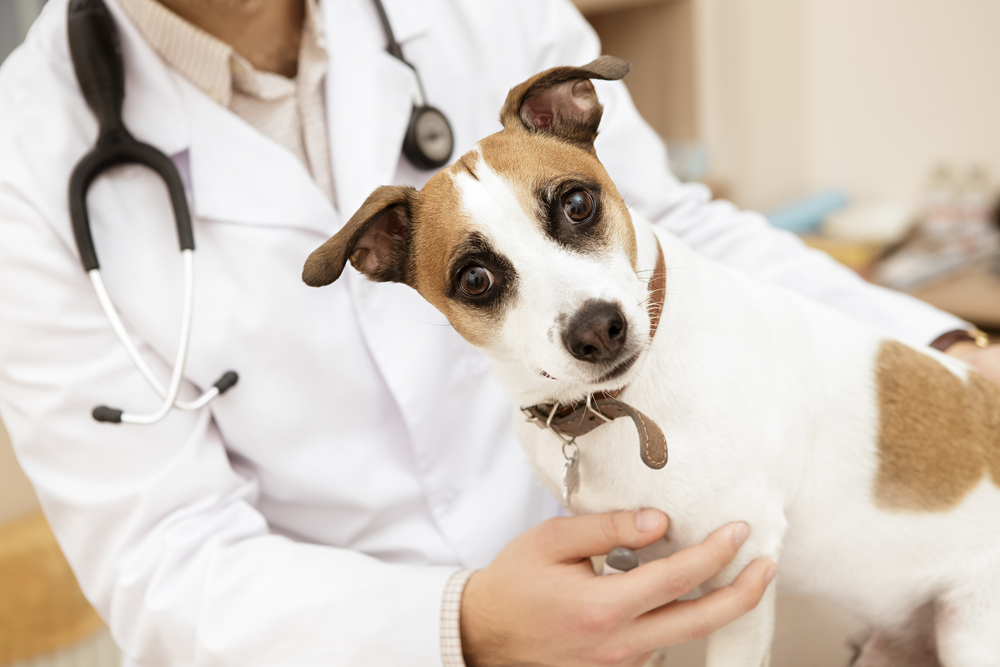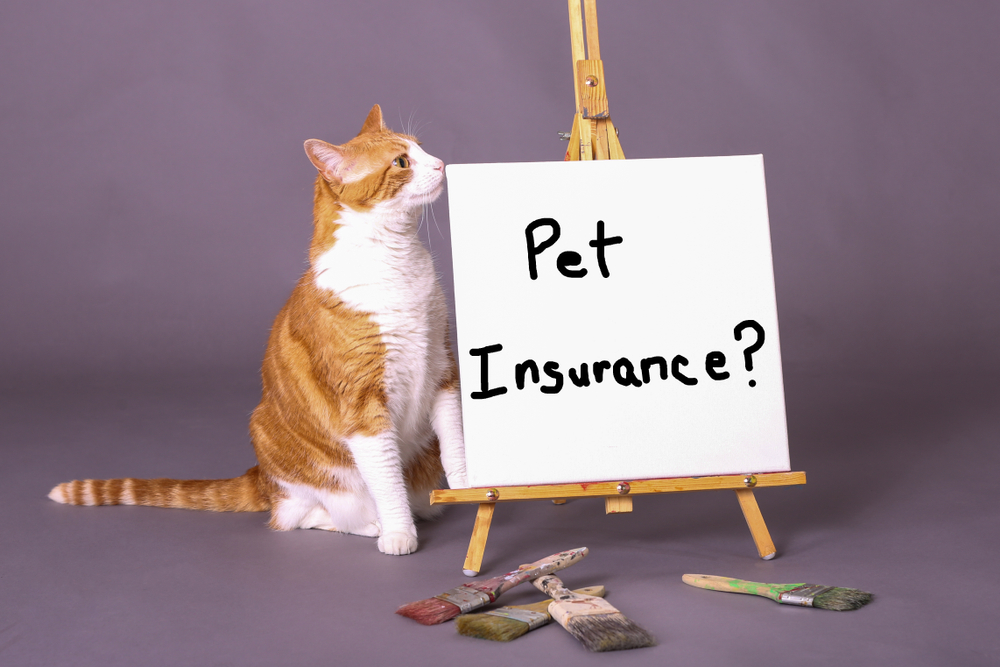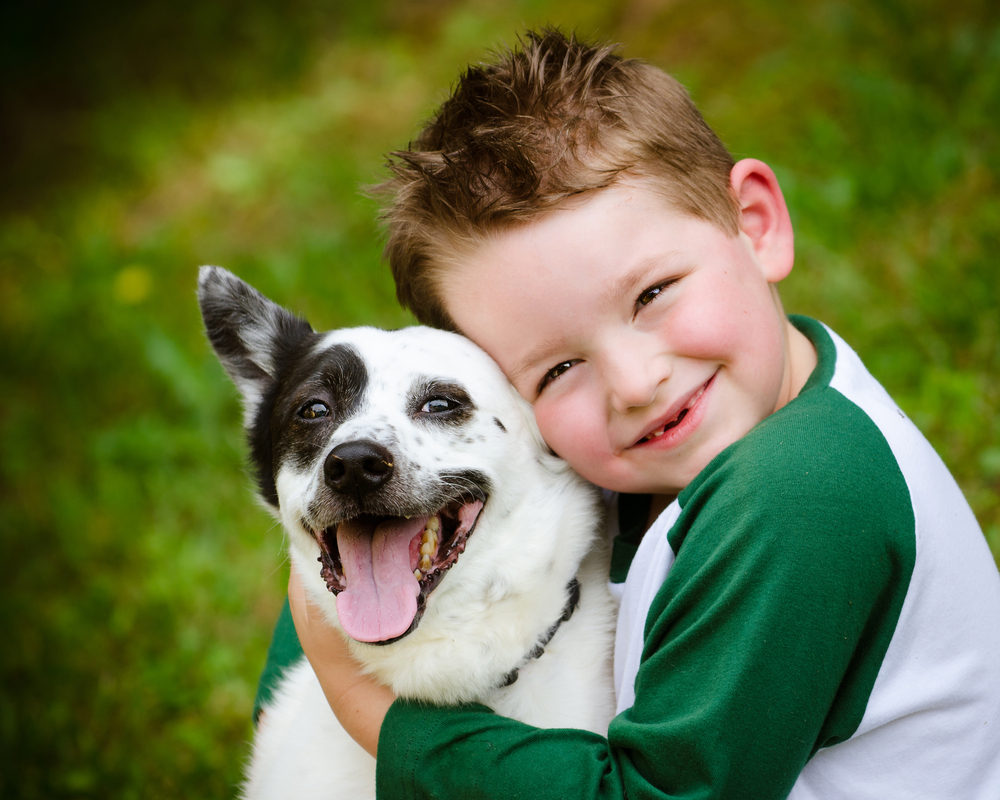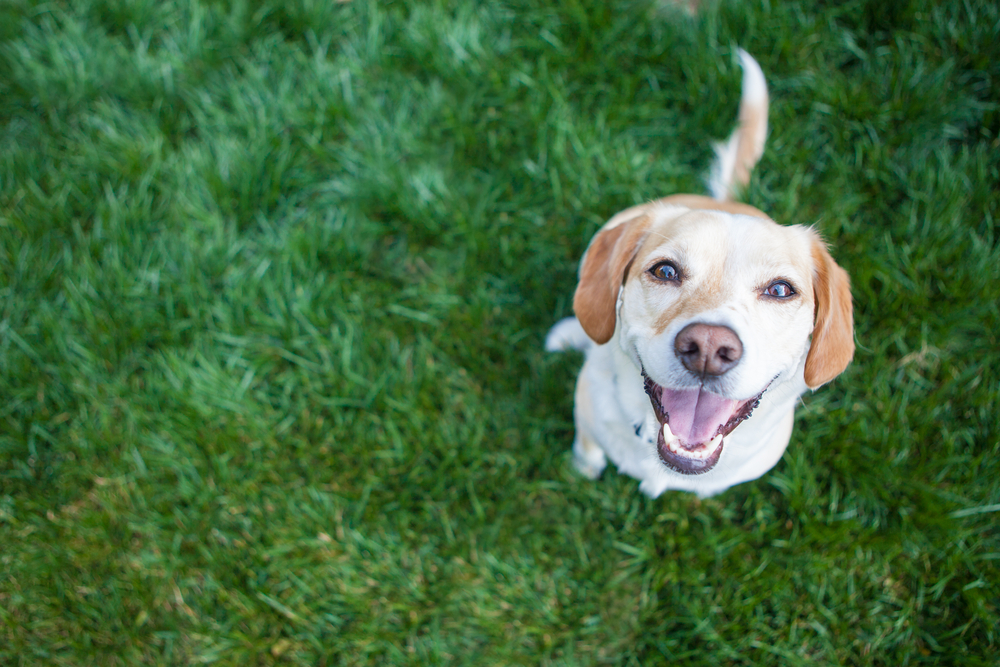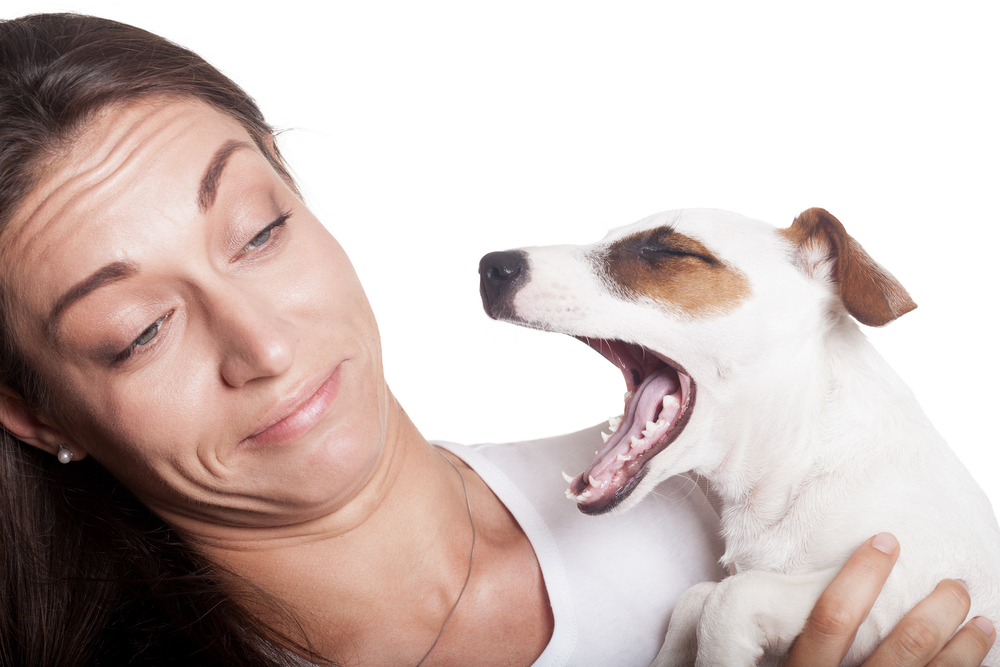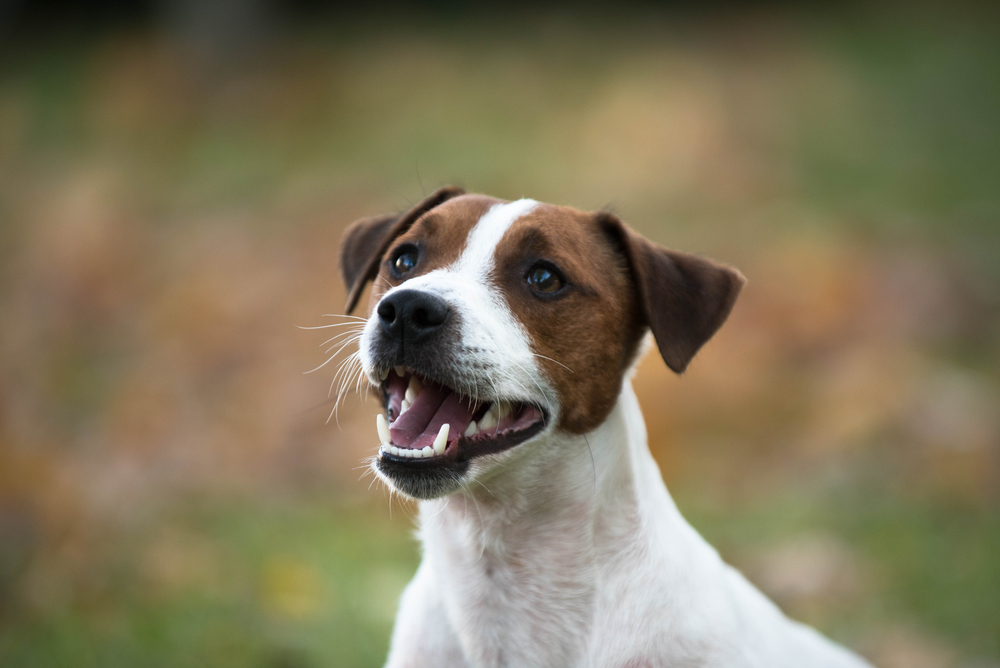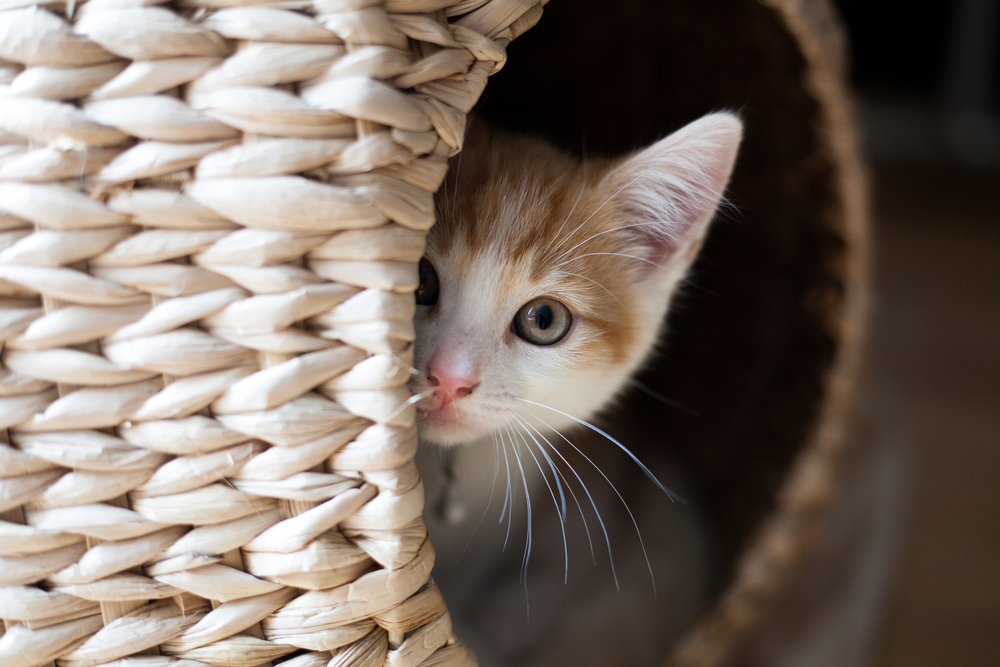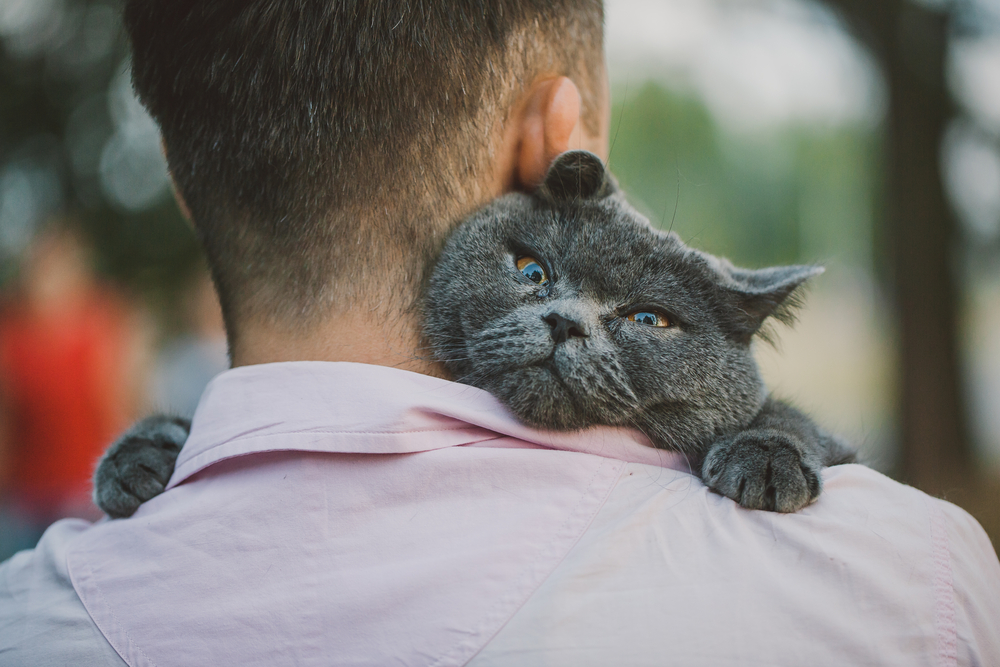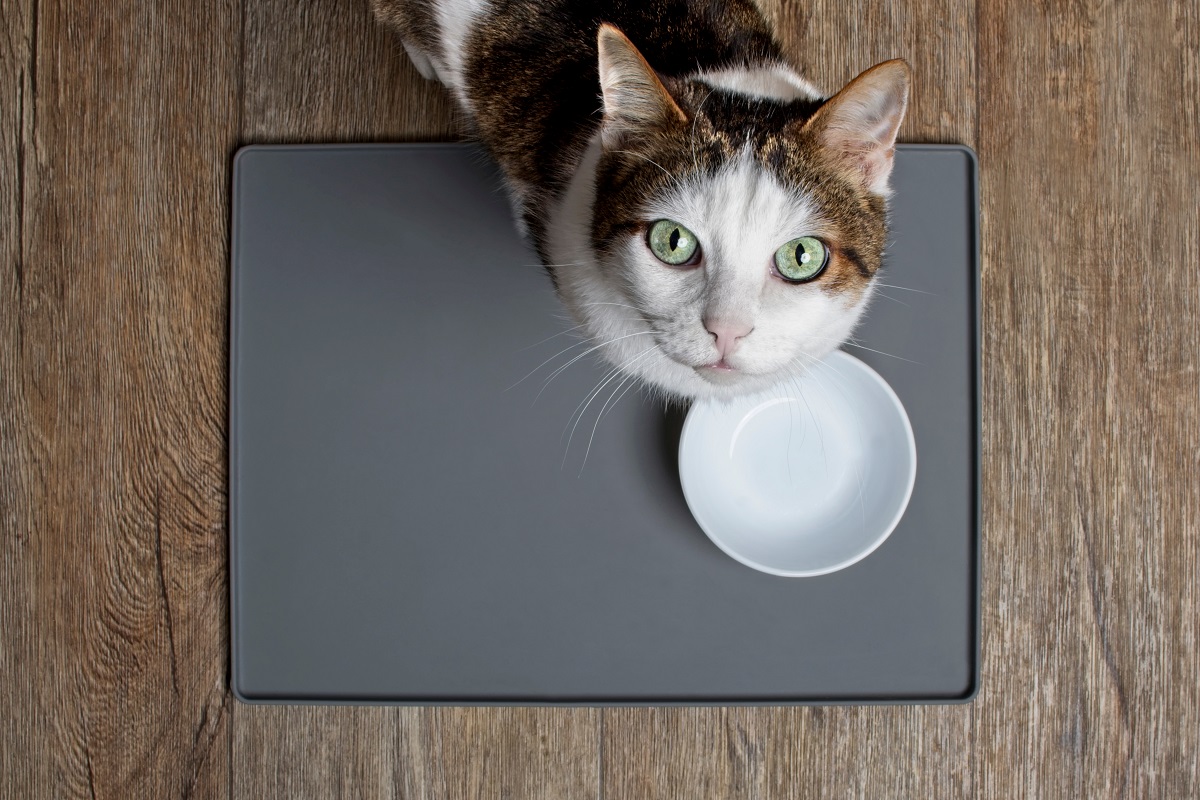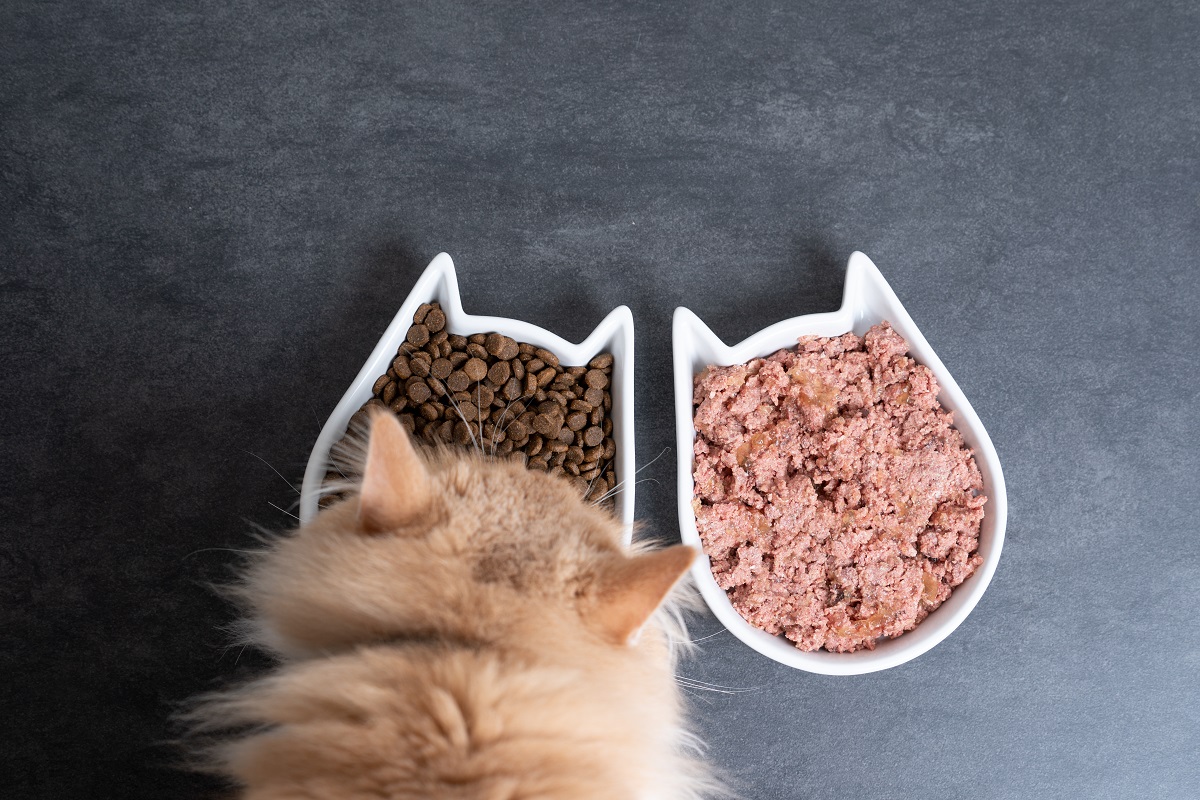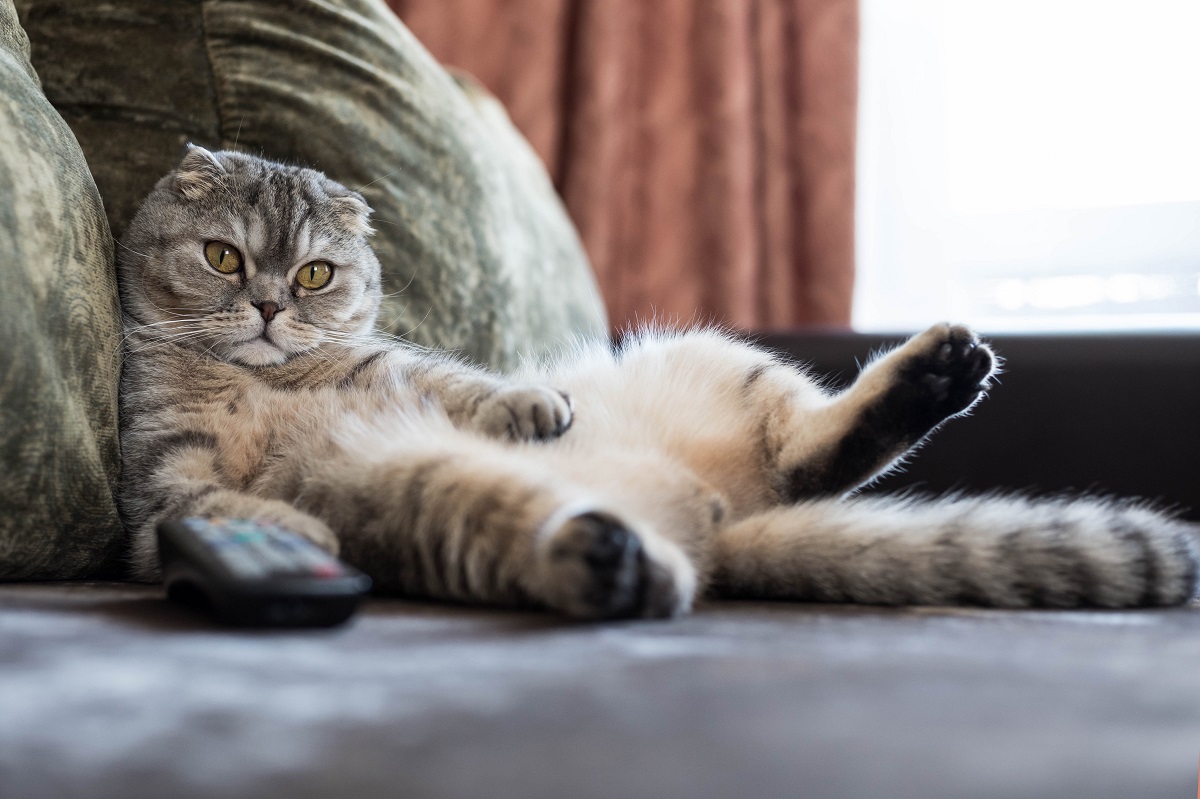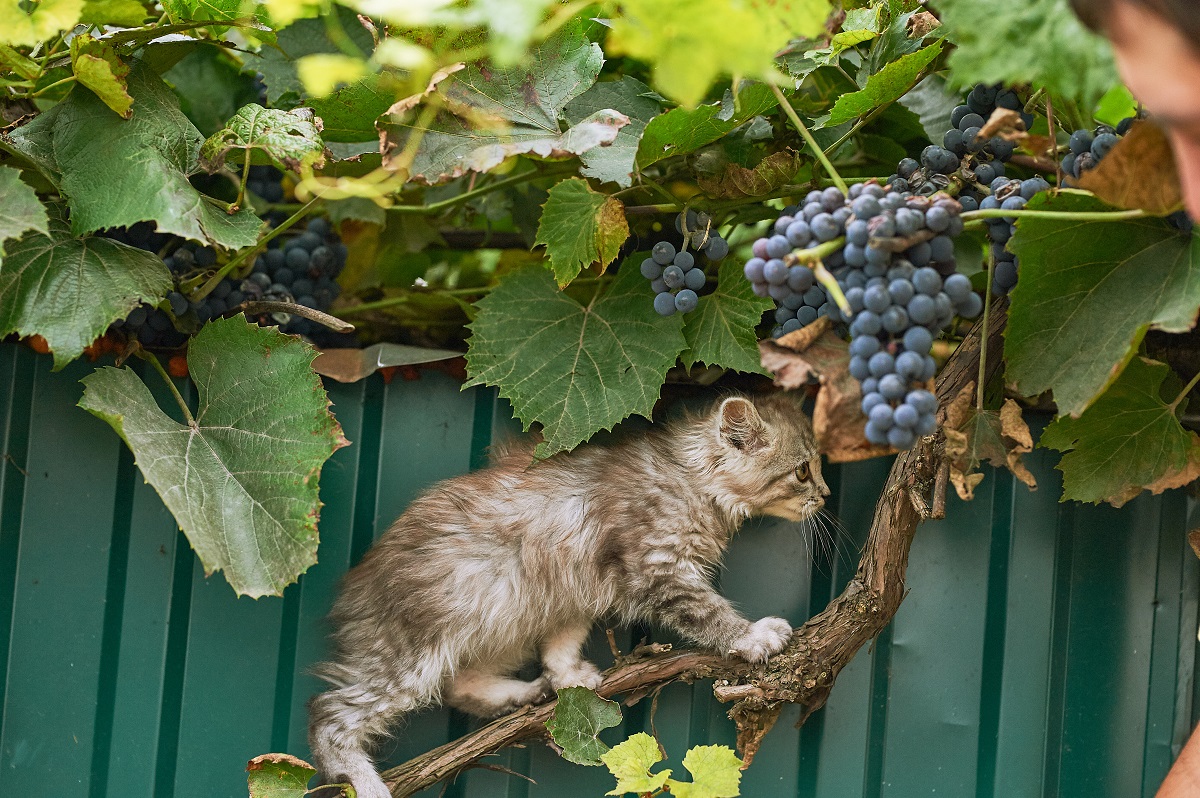A little “doggy breath” can be expected; After all, they eat just about anything off the ground and lick questionable things, too! One of the most common questions of pet parents for veterinarians is “why does my dog’s breath smell so bad?” An estimated 2/3 of dogs over the age of 3 years old have some degree of periodontal disease (disease of the tissues surrounding the teeth). How do you know when bad breath has progressed to a more serious problem, like dental disease? How are teeth and gum problems treated in dogs? And most importantly, can dental problems be prevented?
Advancements in the treatment and prevention of dog dental disease has enabled pet parents and veterinarians to work together to preserve their dog’s chompers for years to come! Understanding how and why gum disease and dental disease happens, and incorporating preventative measures into your dog’s daily routine can help stave off dental disease from causing serious problems in your dog’s mouth.
What Causes Dental Disease in Dogs?
Can dogs get cavities? Unlike humans, it is actually rare for dogs to develop cavities. However, they often develop severe gingivitis and periodontal disease. How does this happen in the first place? Let’s go back to the beginning!
Every day in your dog’s mouth, a combination of saliva, bacteria, and food particles will mix to create an invisible biofilm called plaque that settles on tooth surfaces and below the gumline. Over time, plaque will mineralize into tartar (also called dental calculus) which is the yellowish, hard material that you can actually see as it builds up on your pup’s teeth.
The presence of harmful bacteria inside the plaque and calculus will cause inflammation in the gingiva (gums), which then spreads to the tooth structures. Eventually, if this “bacterial cement” is not regularly removed with dental cleanings, it can even eat away at the jawbone holding the teeth in place. Since this all occurs under the gumline, it is very hard or even impossible to see, and happens without us even knowing! Sometimes all that a pet parent might notice is some stinky breath and a loose tooth; By then, severe and irreversible damage to your dog’s dental health has been done. Just to make matters worse, bacterial infections in the mouth can become so severe that they can impact other internal organs as well, like the heart, kidneys, and liver.

Broken Teeth
Tooth fractures, or broken teeth, are another extremely common cause of oral pain and tooth root abscesses (pockets of infection in the root of the tooth) in dogs. When dogs chew on the bars of their kennel (whether due to boredom or more severe anxiety) or gnaw on hard items like Nylabones, antlers, hooves, ice cubes, and bones, broken teeth can be the result. For these reasons, veterinarians do not recommend offering your dog any of these hard items to chew on.
All tooth fractures should be evaluated by your family veterinarian, as the broken tooth may have exposed the blood vessel and nerve supply to the tooth (called “pulp”). As you can imagine, if a nerve is exposed, your dog will experience quite a bit of pain––-and an exposed blood vessel is like a highway for bacteria to access your dog’s jawbone! Although your dog may still be eating and “feeling fine” outwardly with a broken tooth, keep in mind that his instincts tell him to eat and to hide his pain. Research has proven that dogs do indeed feel the pain of broken teeth and tooth root abscesses just like humans do, and prompt appropriate treatment is vital.
Why Dogs are Predisposed to Developing Dental Disease
Contrary to popular belief, occasionally gnawing on chew toys and feeding hard kibbles to dogs are not quite enough of a defense to impede the buildup of harmful bacteria and plaque that contribute to gingivitis and dental disease. In some ways, dog mouths actually set the stage for gingivitis and disease due to a number of characteristics.
Overcrowding of Teeth
Dogs with smaller mouths often experience overcrowding of teeth. Especially true in small purebred dogs (the toy breeds: Chihuahuas, Yorkies, Maltese, toy Poodles, and mini Dachshunds–just to name a few), there are many large teeth in that small mouth!
Retained Baby Teeth
At the age of 4-6 months, dogs will typically lose all of their baby teeth and grow a full set of adult teeth. This is similar to the process that occurs as human children grow up! Occasionally, your dog’s baby teeth decide to just move over a bit instead of falling out. This allows the corresponding adult tooth to erupt and grow in right next to it while the baby tooth is still there. In an already crowded mouth, this creates even more of an issue requiring attention.
Short Tooth Roots and Tiny Bones
Again, small breed dogs are most severely affected by dental disease because they have disproportionately large teeth with short roots in comparison to larger breed dogs. They also have tiny jawbones to begin with!
Malocclusion
Through selective breeding over the years, humans have created cute and unusual-looking features in some dog breeds that we have come to love and recognize. Who doesn’t love the short snout of a Pug, or the underbite of a Bulldog? While these features create the breed appearance we seek, things like the chewing surface of the teeth are altered away from what nature intended. Underbites can result in the teeth hitting each other, or the roof of the mouth, at awkward and damaging locations. Since the same number of teeth are crammed into such a short snout, this also creates a situation where teeth are too close together (allowing food material to become more easily trapped between the teeth), and sometimes even rotated in order to accommodate them all. Needless to say, when teeth are rotated and not in an orderly line, a dog’s natural chewing motion is affected.
Signs Your Dog Has Dental Disease
At home, pet parents can also detect some changes that could indicate the presence of dental disease and any of these observations should prompt a vet visit for further investigation.
Outward physical or behavioral signs:
– Bad breath
– Dropping food out of the mouth
– Bloody or pink-tinged saliva, increased salivation
– Slower eating, or chewing gingerly
– Eating on one side of the mouth
– Hesitation to chew toys or carry objects in the mouth
– Protective of the face or mouth
– Grouchy attitude or change in demeanor
– Weight loss
Visible oral signs:
– Inflamed and red gums (gingivitis), gum bleeding
– Receding gum line and exposure of tooth roots (teeth look “longer”)
– Tartar buildup/Calculus buildup
– Loose or missing teeth
– Nasal discharge, sneezing, or a draining wound/swelling below the eye area
How Can Your Veterinarian Help Your Dog’s Dental Disease?
At every veterinary visit, your vet will look inside your dog’s mouth for signs of dental problems. Why? Every canine mouth has the potential to pose a surprise to your veterinarian. Even though your dog may look perfectly normal on the outside, a quick peek inside of their mouth may reveal a spectrum of issues ranging from mild gingivitis to severe periodontal disease (complete with loose or missing teeth).
Not all pups love us looking inside their mouths, and there are also often issues lurking below the gum line that we cannot see with our naked eyes! These factors make dog dental disease very difficult to assess thoroughly with just a physical exam, and why your veterinarian will recommend a thorough dental cleaning and evaluation under anesthesia when the time is right for your dog. While vets can sometimes visually identify hints of the issues that are brewing in your dog’s mouth, dental x-rays and probing the gingiva around all surfaces of your dog’s teeth are necessary to reveal the full picture of your dog’s dental health, including aspects that can’t be seen by human eyes! These procedures are performed under anesthesia to maximize both your pup’s safety and the quality of dental care provided. Keep reading for more about what happens during a full dental cleaning.
The Veterinary Dental Cleaning Procedure
Once your vet has identified gingivitis, tartar, a potentially diseased or fractured tooth, they will schedule your dog for a dental appointment. Of course, your veterinarian wants to make sure that your dog is as healthy as possible for anesthesia and to choose anesthetic medications that are the safest possible for your dog. For this reason, bloodwork is typically performed to evaluate your dog’s internal organ function and ensure the anesthesia is safe for them. This bloodwork may be done prior to the procedure, or on the same day as the dental cleaning. Some dogs that have concurrent health issues may benefit from additional testing beforehand like an echocardiogram, chest X-rays, or ultrasound to confirm that the dog is stable and that anesthesia will be as safe as possible.
Sedation medications are administered to help your pup feel relaxed, and an intravenous (IV) catheter is placed and used to deliver anesthetic medications and fluids. Once the anesthetic medications are delivered, a breathing tube is placed, which will provide your dog both oxygen and a gas anesthetic throughout his procedure. This tube also protects your dog’s windpipe from any water or bacteria from being breathed into the lungs–so it actually makes the procedure safer for your pup!
Your dog is also connected to equipment that monitors their oxygen levels, heart tracing (ECG), respiration, blood pressure, and temperature– just like in a human hospital! Your dog’s vital signs are closely monitored and recorded throughout the procedure.
Once the dog is under anesthesia, the veterinarian can get to work! All of the surfaces in your dog’s mouth are examined, including the tongue, soft and hard palate, lips, and tissues around the mouth. Dental x-rays are used to evaluate the condition of the tooth roots and jawbones since abscesses and fractures can only be visualized in this manner.
Just like at the human dentist, the teeth are then cleaned using an ultrasonic scaler and polisher. The harmful tartar and plaque lurking deep under the gumline are removed using the scaler, and the polisher is then used to make the surface of your dog’s teeth smooth and shiny.
If dental x-rays have revealed a tooth root abscess, loose teeth from bone loss, or a tooth fracture, your veterinarian may recommend extracting the tooth (or having your dog evaluated for a root canal or more advanced procedure with a dental specialist at a later date). If an extraction is performed, numbing anesthetic is usually injected into the gums prior to starting the procedure. The extraction of teeth often requires an incision into the gums and removal of some of the bone covering the tooth root so that the entire tooth structure can be removed. The gum tissue is usually sutured closed with dissolvable stitches.
Once your dog’s dental evaluation, cleaning, and any oral surgery procedure that your pup needs are complete, they will spend the afternoon recovering on a soft bed in a quiet area monitored by the veterinary staff. Even when your dog is ready to return home and released to you for pick-up, he will likely be a bit groggy and tired through the evening. Your dog may feel a bit queasy from the anesthetic and may only want a little bit of dinner–however, he should be eating well the following day. If extractions were performed, soft food (canned or softened kibbles with water) is usually recommended for several days, as well as preventing your dog from chewing or playing with toys for at least a week until the mouth has healed.
Some veterinarians like to recheck the mouth after a week or two of healing has taken place, just to be sure your dog is recovering normally. Your vet will encourage you to continue with home care upkeep and at the next physical and dental exam, everything will be evaluated all over again!
Dental cleanings are recommended depending on your dog’s needs, which may be as frequent as every 6-12 months to keep everything in good shape.
How To Prevent Dental Disease
As a dog owner, it is recommended to learn how to clean your dog’s teeth at home. Plus, there are several tenets of home doggie dental care and maintenance that pet parents can incorporate into their daily routine that will complement dental cleanings and promote a healthy mouth. The Veterinary Oral Health Council (VOHC) has created a list of products recommended to achieve positive long-term effects and keep your buddy comfortable.
As you can see, home care can do wonders to keep your dog’s mouth healthy, but unfortunately, it is not quite enough to keep the dentist away completely. We recommend annual veterinary wellness visits that include an oral assessment and recommendations for scheduling a dental cleaning under anesthesia to thoroughly examine all aspects of the mouth. The greatest benefit of your home care efforts is achieved after all of the diseased teeth are treated appropriately and a full mouth cleaning restores the surfaces of the teeth and gums for you to maintain.
What about “anesthesia-free” dental cleanings offered at groomers and pet stores? As you now know after reading about some of the complicated problems that occur inside of a dog’s mouth, it is clear that the best way to fully evaluate the issues that exist is to have a nice relaxed anesthetized dog so they are not stressed and struggling. Only then can the full mouth and all sides of the teeth truly be examined, all issues with the disease-causing plaque above and below the gumline addressed, and infections detected and treated appropriately. Anything less, and you are just removing some of the superficial yellow stuff but leaving behind the issues that will continue to wreak havoc on those sensitive tooth structures. In fact, non-anesthetic dentistry for pets has been outlawed in Canada as a deceptive business practice, since it is considered a cosmetic procedure only and does not do anything to help the dog’s overall health.
Promoting Dental Health Through Home and Veterinary Care
Dogs, especially small breeds, are living longer than ever and we have more tools at our fingertips to be sure that their lives are healthy and comfortable. Pet parents and veterinarians working together to promote healthy teeth and gums will ensure that dental issues are not a pain in the mouth for your dog!
Our AskVet Veterinarians are available to discuss all of your pet’s needs 24 hours a day, 7 days a week. Whether you have an immediate need or are looking to improve your pet’s overall wellbeing, just sign in to your account and one of our friendly and knowledgeable veterinary experts will attend to your needs, no appointment required!
Written by:
Alexa Waltz, DVM
Dr. Waltz was raised near the beaches of Southern California but has spent her adult life living all over the beautiful United States while serving in the military and as a military spouse. She left California for the first time to pursue a career as a veterinarian at Louisiana State University School of Veterinary Medicine and graduated as a Doctor of Veterinary Medicine in 2006. She was accepted into the US Army Health Professionals Scholarship Program during vet school and upon graduation spent her military years as a veterinarian in San Diego working for the US Marine Corps and US Navy Military Working Dog programs as well as caring for pets of service members. After her military service, she became a civilian veterinarian and continued as a small animal general practitioner at clinics in California, Rhode Island, Colorado, and Maryland. Dr Waltz loves to see her “in person” patients just as much as communicating with and assisting pet parents virtually on AskVet. Dr Waltz is also a Mom to 3 humans, 2 guinea pigs, and 1 Australian Shepherd and in her spare time she loves traveling, adventures, exercising, and doing just about anything out in nature!

